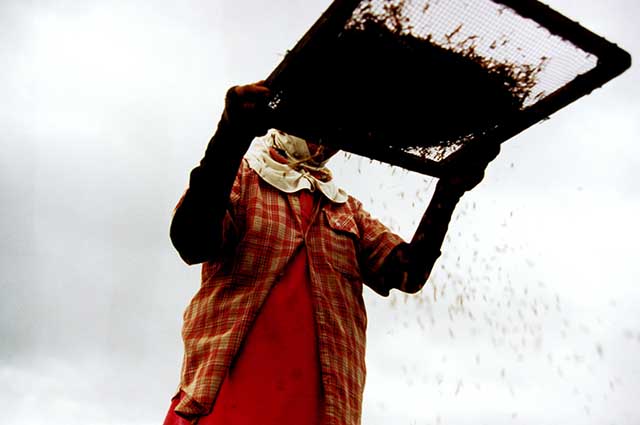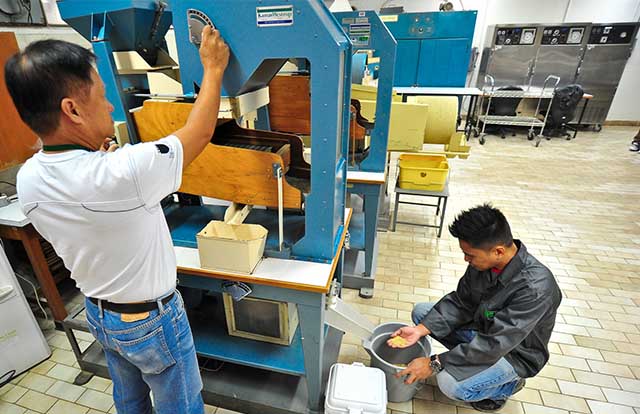Cleaning
Cleaning grains after harvest is important as it removes unwanted materials from the grain.
A clean grain has a higher value than a grain that is contaminated with straw, chaff, weed seeds, soil, rubbish, and other non-grain materials.
Grain cleaning will improve the drying, the storability of grain, reduce dockage at time of milling, and improve milling output and quality; while, seed cleaning will reduce damage by disease, and improve yields.
How to clean grains
 Winnowing
Winnowing
Lighter materials such as unfilled grains, chaff, weed seeds, and straw is removed through winnowing. To improve efficiency when there is no sufficient wind, a blower or an air fan can be used. However, winnowing recovers only the heavier grains. Other heavy particles like heavier weed seeds, off types, stones and dirt might still be included in the rice.- Screening/Sifting
Smaller materials such as weed seeds, soil particles and stones can be removed by sieving the grain through a smaller sized screen (1.4 mm or less sieve opening). This can also be done mechanically through machine cleaners which use an air stream to remove light materials such as straw, chaff, and unfilled grains.
Recommended winnowing practices:
- Place grain on a winnowing tray.
- Place a net or mat on the ground.
- Tilt the tray against the wind.
- Pour grain slows at a height of about 1 m.
- Wind will separate light from heavy grains.
- Recover only the heavier grains.
- Repeat the procedure if needed.
- Use a fan or blower if there is not sufficient wind.











